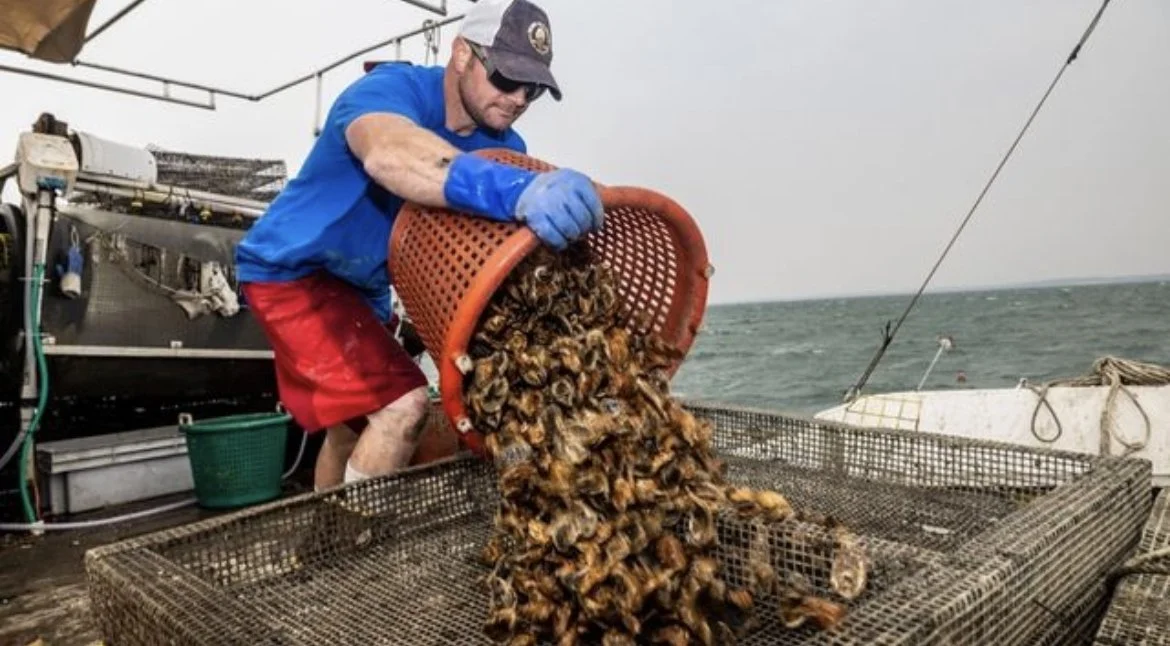By MARIE ELENA MARTINEZ for Newsday FeedMe Magazine, July 2023
Photo by Alejandra Villa Loarca
Matt Ketcham, Peconic Gold Oysters
Great Peconic Bay
“The last time we touched these was the end of October,” explained Captain Matt Ketcham, as he and his deck boss, Chase Hale, heaved an oyster cage out of Great Peconic Bay onto a barge. For the past eight years, Hale has been learning the art of oyster farming from Ketcham, a self-taught fisherman at the helm of Peconic Gold Oysters. His buttery, beautiful specimens that land on restaurant menus across the East End and beyond are the real deal—as is he, an easygoing yet ambitious father of a two-year-old son named Wyatt and a daughter on the way.
Through the six-month growing season, from May to the end of October, Ketcham is on the water daily. Today, he’s “tumbling”—a process through which growing oysters are mechanically rinsed, sorted by size, and pruned, giving the shell a nice shape so they will shuck easily and rest comfortably on a plate. Then they are put back into the water in new cages with more room to grow. Ketcham is a first-generation seaman who grew up in Patchogue, and his love of fishing started around his “fifth or seventh birthday” with his dad. He remembers it as a cold, rainy, brutal day where he only caught one fish.
Fast-forward 30 years …
Although he graduated from the aquaculture and fisheries technology program at the University of Rhode Island, Ketcham credits his experiences in the many fisheries he’s worked at for giving him the education and confidence needed to get things done. Currently, Peconic Gold has two ten-acre leases on the bay. Approximately two miles offshore, Ketcham’s farm consists of about 200 cages full of growing oysters—a number that will increase to more than 500 by the end of the summer. With about 3,500 oysters in each cage, that’s a lot of bivalves to oversee. Because it takes a fair amount of time—about one and a half to three years—to bring an oyster to market, patience is key, as is organization. Oysters aren’t just classified as big or small, Ketcham explained. “You have old oysters, young oysters, oysters that are going fast, oysters that are going slow, ugly oysters, all different stuff. It’s a stressful business, and hard work, but there’s nothing else I could picture myself doing.” —MARIE ELENA MARTINEZ
Peconic Gold Oysters (peconicgoldoysters.com) may be found at restaurants across the East End and Braun Seafood in Cutchogue. You can also buy them at the Peconic Gold farm stand, 21125 County Rd. 48, Cutchogue. It’s on the north side of the road between Depot Road and Cox Lane.

